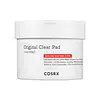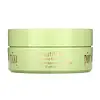What's inside
What's inside
 Key Ingredients
Key Ingredients

 Benefits
Benefits

 Concerns
Concerns

 Ingredients Side-by-side
Ingredients Side-by-side

Water
Skin ConditioningGlycerin
HumectantHippophae Rhamnoides Water
MaskingCarrageenan
Dipropylene Glycol
HumectantNiacinamide
SmoothingAscorbic Acid
AntioxidantCocos Nucifera Fruit Extract
EmollientCitrus Limon Fruit Extract
MaskingCamellia Sinensis Leaf Extract
AntimicrobialPanax Ginseng Root Extract
EmollientGlycyrrhiza Glabra Root Extract
BleachingArginine
MaskingFerulic Acid
AntimicrobialCaffeine
Skin ConditioningDipotassium Glycyrrhizate
HumectantCyamopsis Tetragonoloba Gum
Emulsion StabilisingCeratonia Siliqua Gum
EmollientPropanediol
SolventCalcium Chloride
AstringentPentylene Glycol
Skin ConditioningPinus Sylvestris Leaf Extract
TonicEthyl Hexanediol
Solvent1,2-Hexanediol
Skin ConditioningPotassium Chloride
Polyglyceryl-10 Laurate
Skin ConditioningAllantoin
Skin ConditioningCellulose Gum
Emulsion StabilisingChlorphenesin
AntimicrobialSucrose
HumectantCalcium Lactate
AstringentCaprylyl Glycol
EmollientSqualane
EmollientEthylhexylglycerin
Skin ConditioningDisodium EDTA
CI 77492
Cosmetic ColorantWater, Glycerin, Hippophae Rhamnoides Water, Carrageenan, Dipropylene Glycol, Niacinamide, Ascorbic Acid, Cocos Nucifera Fruit Extract, Citrus Limon Fruit Extract, Camellia Sinensis Leaf Extract, Panax Ginseng Root Extract, Glycyrrhiza Glabra Root Extract, Arginine, Ferulic Acid, Caffeine, Dipotassium Glycyrrhizate, Cyamopsis Tetragonoloba Gum, Ceratonia Siliqua Gum, Propanediol, Calcium Chloride, Pentylene Glycol, Pinus Sylvestris Leaf Extract, Ethyl Hexanediol, 1,2-Hexanediol, Potassium Chloride, Polyglyceryl-10 Laurate, Allantoin, Cellulose Gum, Chlorphenesin, Sucrose, Calcium Lactate, Caprylyl Glycol, Squalane, Ethylhexylglycerin, Disodium EDTA, CI 77492
 Reviews
Reviews

Ingredients Explained
These ingredients are found in both products.
Ingredients higher up in an ingredient list are typically present in a larger amount.
1,2-Hexanediol is a synthetic liquid and another multi-functional powerhouse.
It is a:
- Humectant, drawing moisture into the skin
- Emollient, helping to soften skin
- Solvent, dispersing and stabilizing formulas
- Preservative booster, enhancing the antimicrobial activity of other preservatives
Allantoin is a soothing ingredient known for its protective and moisturizingg properties. Because of this, it is often added to products with strong active ingredients.
Studies show higher concentrations of this ingredient can promote wound healing.
Though it can be derived from the comfrey plant, allantoin is produced synthetically for cosmetic products to ensure purity.
Learn more about AllantoinArginine is an amino acid that is important for human development. Your body uses is it to produce hair keratin and skin collagen.
As a cosmetic ingredient, Arginine has antioxidant properties and can also help repair damaged skin. This ingredient is derived either synthetically or from animals.
Arginine isn't fungal acne safe when used in the presence of other lipids (fats, fatty acids, oils, esters, etc). Oils and fats occur naturally within the skin, so take caution when using Arginine if you're prone to fungal acne.
Learn more about ArginineEthyl Hexanediol is an aliphatic alcohol. It is a solvent.
Solvents are used to keep ingredients together in a product. They can help dissolve ingredients to stable bases or help evenly distribute ingredients throughout the product.
Glycerin is already naturally found in your skin. It helps moisturize and protect your skin.
A study from 2016 found glycerin to be more effective as a humectant than AHAs and hyaluronic acid.
As a humectant, it helps the skin stay hydrated by pulling moisture to your skin. The low molecular weight of glycerin allows it to pull moisture into the deeper layers of your skin.
Hydrated skin improves your skin barrier; Your skin barrier helps protect against irritants and bacteria.
Glycerin has also been found to have antimicrobial and antiviral properties. Due to these properties, glycerin is often used in wound and burn treatments.
In cosmetics, glycerin is usually derived from plants such as soybean or palm. However, it can also be sourced from animals, such as tallow or animal fat.
This ingredient is organic, colorless, odorless, and non-toxic.
Glycerin is the name for this ingredient in American English. British English uses Glycerol/Glycerine.
Learn more about Glycerin